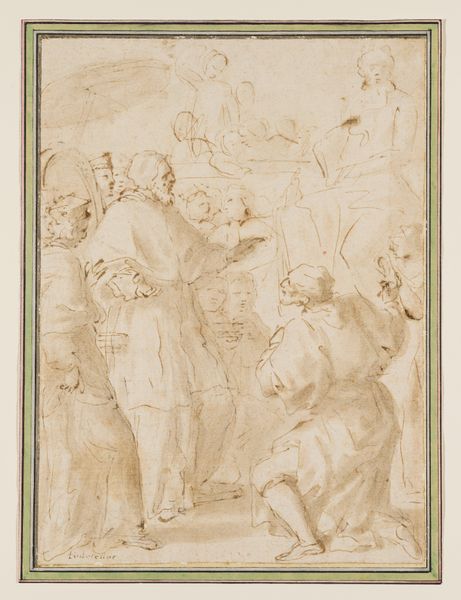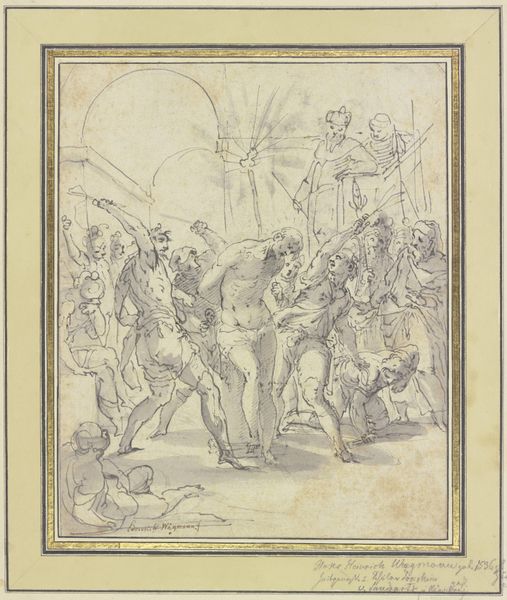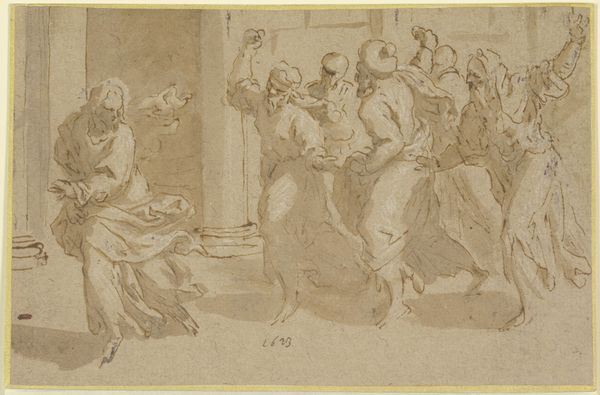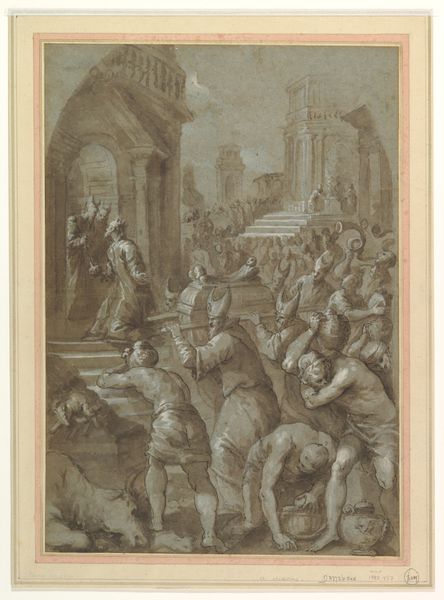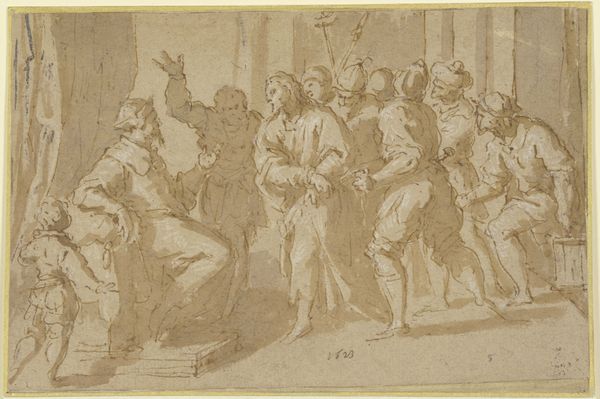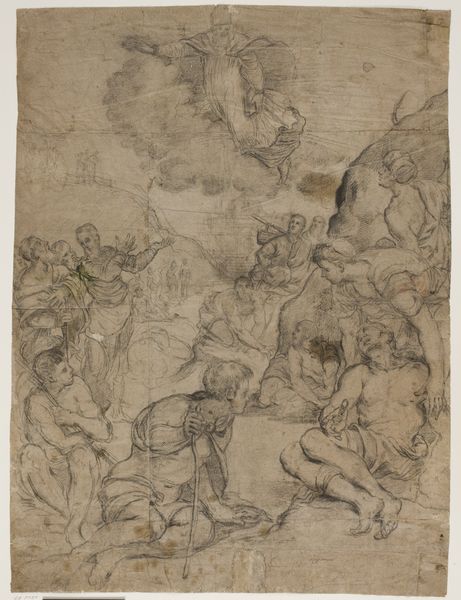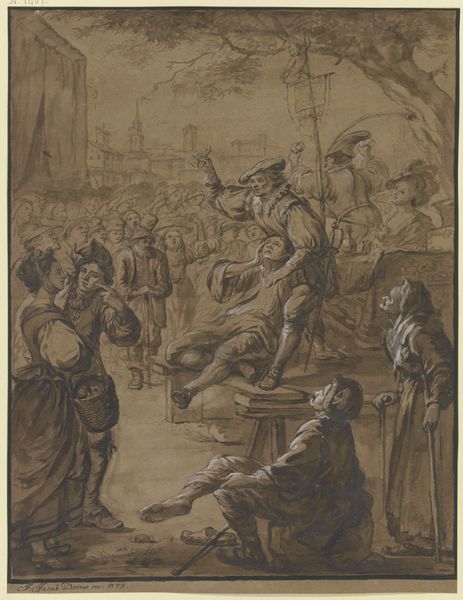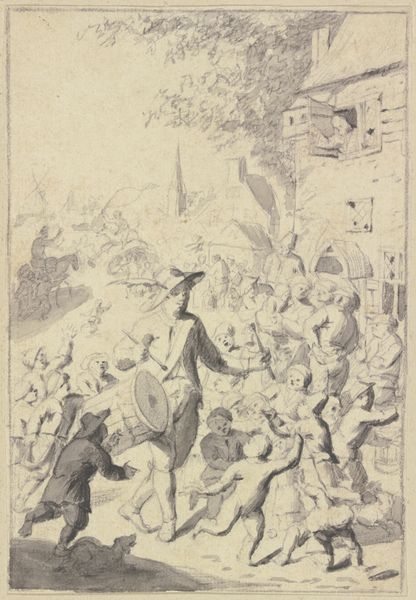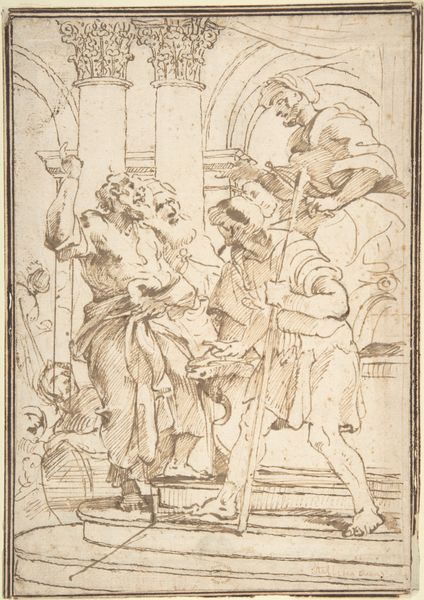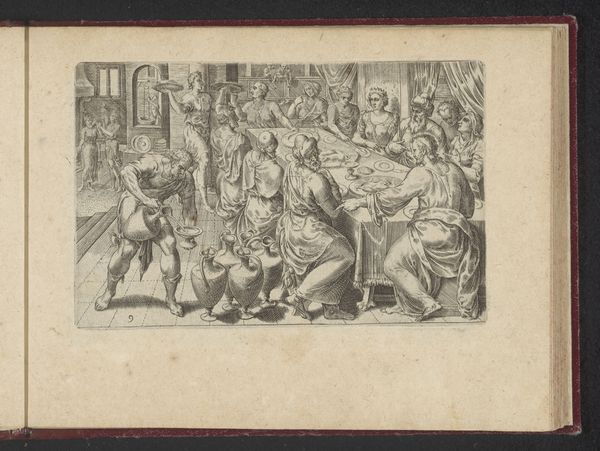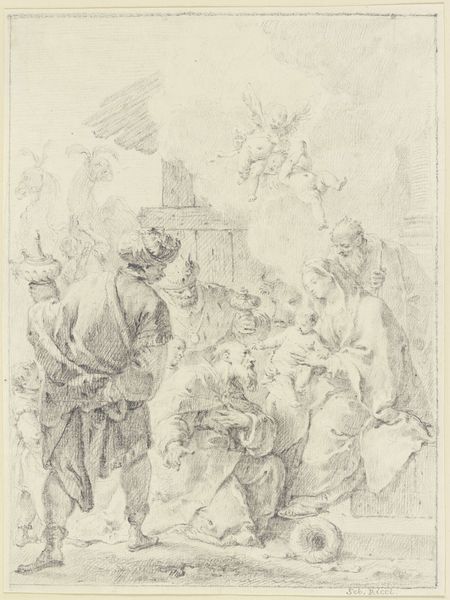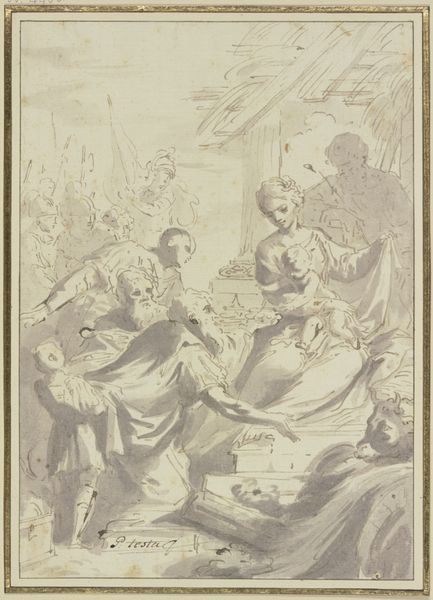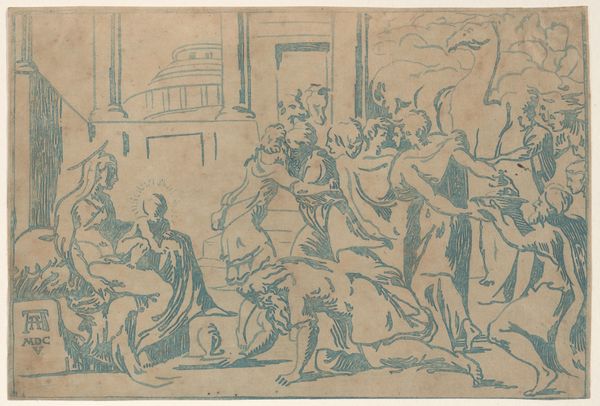
drawing, red-chalk
#
drawing
#
baroque
#
red-chalk
#
figuration
#
watercolour illustration
#
history-painting
Copyright: Public Domain
Curator: Welcome. Today, we’re looking at a red-chalk drawing from the Städel Museum, titled "Ein Bischof lässt ein Maultier auf die Knie fallen," which translates to “A Bishop Causes a Mule to Fall to Its Knees,” by Andrea Sacchi. Editor: My first impression is one of understated power. It's a very economical drawing, but the scene depicted is intensely dramatic, charged with the suggestion of divine intervention. There's a certain earthiness conveyed in the red chalk itself. Curator: Indeed. Consider the implications of Sacchi choosing red chalk, a material easily accessible, lending itself to studies and preparatory sketches. It brings this historical moment, possibly an anecdote, into the realm of the immediate and relatable. We witness the artist wrestling with form, exploring light and shadow, imbuing a rather unusual scene with immediacy. Editor: For me, the kneeling mule immediately grabs my attention. Animals, especially in religious art, often act as powerful symbols. Humility, servitude... and considering the bishop’s gesture, almost an invocation, it makes me wonder what this miracle suggests about religious authority. Does it confirm or question it? The people surrounding him all look so astonished. Curator: The image certainly highlights the power dynamics inherent in religious structures. The artist's choice of medium seems deliberate—the rawness of the chalk drawing juxtaposed against the refined setting evokes questions of material value, labor, and production in the 17th century. Is Sacchi perhaps commenting on the role and wealth associated with religious power and perhaps even the burdens carried by such authority. The mule literally carrying someone of status, made to kneel. Editor: You've really nailed that. Considering this potential ambivalence towards authority, observe how the light seems to radiate outwards from the bishop. The symbol of divinity acting in real life... but still the symbolism feels ambiguous. Almost uneasy. Perhaps Sacchi intended to leave the symbolism open to interpretation, thus making it so enduring for each and every observer over time. Curator: And on the surface, one finds that the redness across the entire piece brings about a harmony that speaks to Sacchi's skills as an artist, yet it all adds up to complex symbolism and the political and cultural reality of religious structures during his era. The simple means used point to the more important reality of the story being told. Editor: Well, that makes you wonder whether to believe what your eyes are seeing in the image—and indeed, perhaps even the very real status and meaning of the church in its age! Curator: It has certainly made me consider the weight of responsibility when visualizing powerful imagery!
Comments
No comments
Be the first to comment and join the conversation on the ultimate creative platform.
